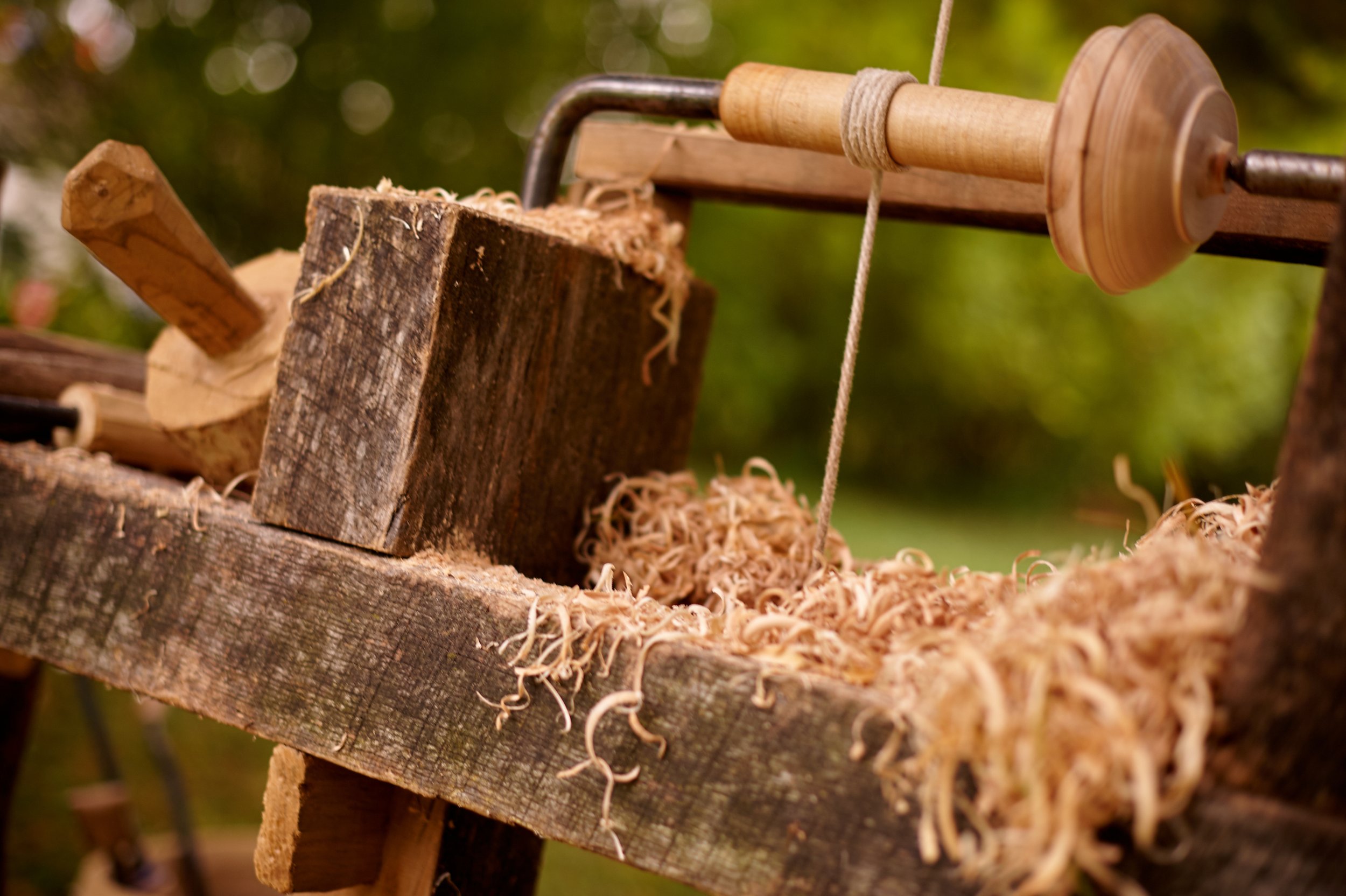
Spring Pole Lathe
Turned wooden artifacts have been found across Europe, the Middle East, and Asia dating back 2500 years. The Pole Lathe can be traced as far back as the 13th century and gained traction in Europe in the Middle Ages. This style of turning saw regular use until it nearly disappeared in the early 20th century. Now a small growing community of talented individuals, mostly hobbyists, are breathing life back into the practice.
The spring pole lathe is constructed with wood and metal components using basic joinery and functions using a simple reciprocating mechanism. Rope is attached to a foot pedal below the lathe, and is fed up through the lathe, wrapped around the work fixed between two metal centers, then fixed to a long sapling craned over the top of the lathe that acts as a spring. When the operator pushes the pedal down the work spins towards the operator and the tool is engaged. When fully pressed down the work stops rotating and at the spring tension is loaded in the sapling above the lathe. When released the pedal returns to its upright position and the work spins in reverse to its original position, ready for the next cut to be made.


